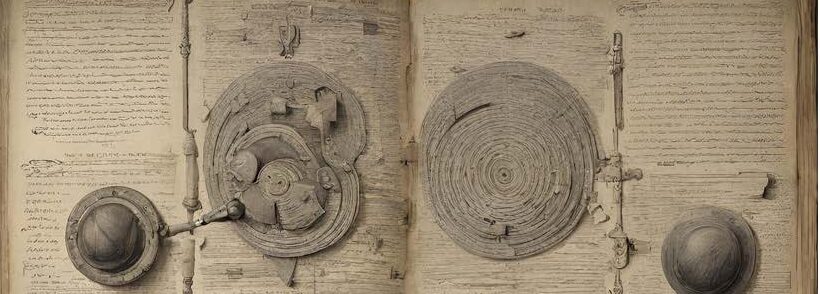
“Mankind has always found ways to record their thoughts over ages. First, they used leaves, silk and clay tablets. After the invention of paper and later its transfer to Europe through Islamic societies, not only did information become widespread but the intellectual world was given its fuel.”
(Ekinci, 2016)
What is Islamic PaperMaking?
Islamic Paper making is the revolutionary technology of paper production that was invented in China and was transmitted to the Islamic world in the Eight Century by Muslim merchants traveling the Silk Road. The Islamic world then further developed and refined the papermaking techniques during the medieval and early modern period by improving the quality of paper as well as developing new methods for pulping, beating, and sizing paper. The Islamic paper making technique then spread from Baghdad, to Persia, Syria, and North Africa and finally to Spain in the 10th century.
The Historical Development Of Islamic PaperMaking
The technology of Islamic PaperMaking which first flourished in the Islamic world (Iraq, Syrian and Palestine) then spread to the West. The Islamic PaperMaking technique allowed the mass production of paper making it an accessible and readily available technology of text. The mass production of Islamic paper allowed information to be democratized and it became possible to make a living from writing and selling books.

The Islamic PaperMaking Techniques
The Islamic Papermaking techniques contribute to the distinct properties of Islamic paper. In fact, according to the British Library, the use of a flexible screen made of grass, reeds, or bamboo, combined with horsehair, creates a fine and smooth texture. The process of interleaving and stacking sheets, followed by pressing with weights, enhances the paper’s compactness and absorbent qualities. The final steps of sizing, drying, flattening, and burnishing result in durable and smooth Islamic-style paper. This craftsmanship allows for the production of high-quality sheets suitable for calligraphy, manuscript illumination, and various artistic endeavors.
In addition, the Islamic paper making technique was highly efficient and cost effective. This allowed the mass production of paper making it an accessible and readily available technology of text. As a result, the use of Islamic paper soon spread from governmental institutions to all segments of society. By the ninth century, Baghdad was filled with hundreds of shops in which paper and books were sold.
The Properties and Functionalities of Islamic Paper
Firstly, the surface smoothness and absorbency of Islamic Paper made it easy for scribes and calligraphers to create text and intricate scripts. Secondly, it’s absorbency also meant the great difficult of it being difficult to erase, which was an important aspect in documentation and record-keeping as it had to be secure from forgery, especially in educational and governmental institutions. Thirdly, it’s durability made it an ideal technology of text for preserving manuscripts that could be passed down across generations which was essential for the continuity of the knowledge and literature that was produced in the Islamic Golden Age. Moreover, it’s durability allowed the spread of knowledge across the Islamic World as it was transported across vast distances through trade networks and thus the medium through which the knowledge was being spread had to endure harsh conditions. Fourthly, Islamic paper was an ideal medium for the annotations of classical texts as it allowed scholars to add marginal notes and commentary without having to compromise the legibility of the original text. Finally, the smooth and flexible texture of Islamic paper made it the ideal medium for the material basis for the Islamic art during the Golden Age.
Overall, while paper may seem so ordinary today, its historical significance and transformative role in shaping modern civilization cannot be overstated. The utilization of paper by Muslims during the Islamic Golden Age, coupled with large-scale production and innovative manufacturing methods had crucial significance in the interfaces in the technologies of texts.
References
Cotter, H. (2001, December 29). The story of Islam’s gift of paper to the West. The New York Times. https://www.nytimes.com/2001/12/29/books/shelf-life-the-story-of-islam-s-gift-of-paper-to-the-west.html
Ekinci, E. B. (2016, July 14). Unwrapping the history of paper and its influence in the islamic world. Daily Sabah. https://www.dailysabah.com/feature/2016/07/15/unwrapping-the-history-of-paper-and-its-influence-in-the-islamic-world
Making Islamic-style paper – collection care blog – british library blog. (n.d.). https://blogs.bl.uk/collectioncare/2015/04/making-islamic-style-paper.html
McLean, J. (n.d.). World Civilization. The Islamic Golden Age | World Civilization. https://courses.lumenlearning.com/suny-hccc-worldcivilization/chapter/the-islamic-golden-age/
Medieval manuscripts blog – british library blog. (n.d.). https://blogs.bl.uk/digitisedmanuscripts/
Nizamoglu, C. (2019, November 28). The beginning of the paper industry. Muslim Heritage. https://muslimheritage.com/paper-industry/
Pervaiz, O. posts by S. (2023, April 16). The art of paper-making: Hiba: Publishers of Islamic Books & Accessories. Hiba. https://www.hibamagazine.com/the-art-of-paper-making/
Public Broadcasting Service. (n.d.). Islam: Empire of faith – innovative – paper & Publishing. PBS. https://www.pbs.org/empires/islam/innopaper.html#:~:text=Muslims%20were%20responsible%20for%20the,Asia%20in%20the%20eighth%20century.
